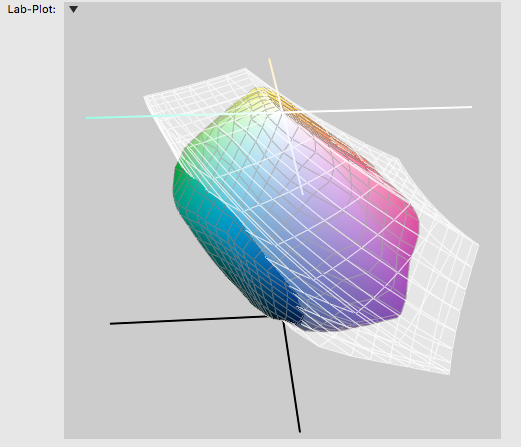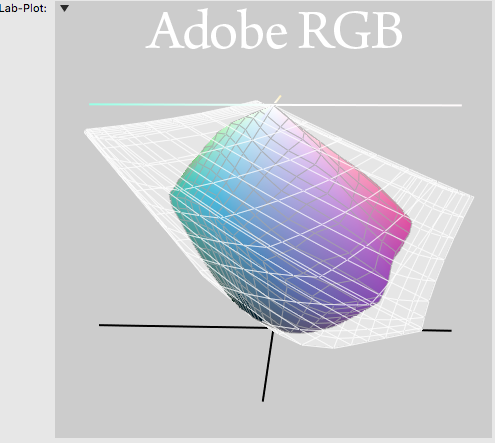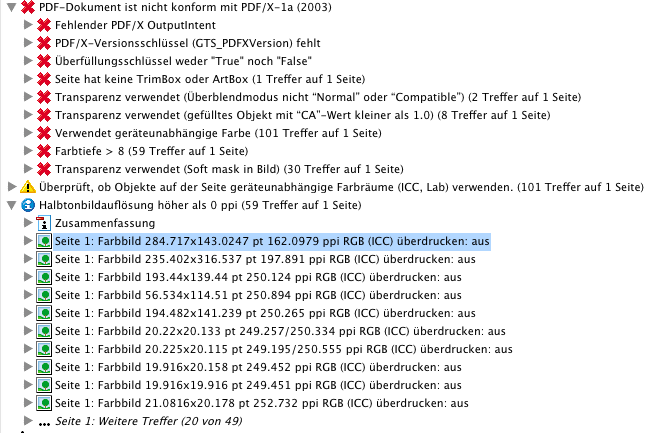-
Posts
33 -
Joined
-
Last visited
Everything posted by leechi
-

Lagging Pen strokes
leechi replied to Nezza's topic in Pre-V2 Archive of Affinity on Desktop Questions (macOS and Windows)
vector brush tool? dont have AD but drawing big vectors with a brush sounds like something i wouldnt expect any realtime performance from. do you have other software which can do this? -
what exactly is the question or problem? you should use the color profile that matches the printing process. contact your printer not the people who make standardized profiles. default color spaces in program settings are completely irrelevant. edit: ok i get it now. if the printing press wont tell you what profile to use, look for another printer. if they dont have a color management workflow they simply refuse to take any responsibility for quality.
-

No support for Hue/Sat tool when importing psd
leechi replied to leechi's topic in Feedback for Affinity Photo V1 on Desktop
@Fixx check OP date it wasnt in there back then but is now thats why i said "thanks by the way". my bad for bumping up and old thread -
time for some basics my dudes. RGB and CMYK are inherently different as RGB is literally a screen that emits light while print CMYK absorbs light on paper. (as emulated by your software in the screenshots provided in the opening post). hence your "super shiny" RGB colors will all vanish and that sometimes can completely destroy images in the process the pros about keeping your workflow in RGB as long as possible is that your files are not tied to any output processes. lets say you keep everything in RGB, at the end you can convert it into an output medium color space of any choice in one step. the cons are that your conversion from RGB to CMYK become uncontrollable. if you send RGB files to a printer you have no control over the end result and the printer wont give two fucks if a picture loses lots of details in the conversion. if you convert everything yourself by hand you can see the effects from going from RGB to CMYK (as in your opening post) and adjust accordingly. the cons is that you work towards one very specific output medium. see the attached LAB plots. the sRGB space (white) compared to CMYK ISOcoated v2. (colored) CMYK is much much smaller than sRGB but sRGB cant achieve certain blueish tones. second screenshot is Adobe RGB instead of sRGB. you can see that in a adobe RGB workflow, you will achieve better results in print. no printer can output 16bit colors. so the question shouldnt be "8 or 16bit?" it should be "oh shit am i using sRGB? did i F**k up already?" if you print it on office printers tho none of this matters.
-
achso dachte du gibst uns deine PDF. also beim PDF dialog behebst du deine Probleme (Einzelseiten, fehlende Bilder) nicht. mal angenommen du hast dein chaos aufgeräumt sieht der neuere PDF dialog schon besser aus. die druckerei fordert entweder sRGB an, welches sie in ISOcoated v2 umwandeln oder direkt ISOcoated v2. du hast jetzt den PDFx4 standard ausgewählt. ich geh davon aus dein dokument ist komplett in sRGB aufgebaut, und nur sRGB? ansonsten schreib lieber eine PDFx1a in ISOcoated V2 das ist idiotensicherer. no offense. benutz ich selber.
-
nando i need you to be really honest with me here :^) are you screenshoting your pictures instead of saving them with the menu in affinity?
- 38 replies
-
- importing image
- original color
-
(and 3 more)
Tagged with:
-
this is a fun one. i'll try my luck: 1. go to preferences -> colors and uncheck "perform OCIO conversion based on file name" 2. open file 3. document -> assign .icc profile and pick sRGB
- 38 replies
-
- importing image
- original color
-
(and 3 more)
Tagged with:
-
i mean exporting. and if you dont find the advanced settings box id suggest starting there (see screenshot its photo however not designer) either transparency/alpha is reduced when exporting your pdf or the printer software does it for you. reason being is fairly simple: a printer cant print transparent elements. a 100% black field in 20% opacity gets converted into 20% black. quick maths *dab* its always desirable to reduce it yourself, because you have no control over how a printer processes the PDF. you do however have full control when exporting PDFs (given you know what you are doing). the only reason you would want to keep transparent objects in your PDF is so that someone working at a commercial printing press could potentially edit certain things if need be. and thats really it. else there is simply no use for it. this line of thinking is reflected in the pdf printing standards. a pdf X-1a standard doesnt allow for RGB files or transparent objects and reduces/converts it upon writing the PDF. its *idiot proof* and hence still the best PDF standard almost two decades later. a more modern standard like X-3 or even X-4 is much more lenient. letting you embed ICC profiles, RGB and LAB and whatnot. the PDF you wrote is just a free for all where everything goes. i wouldn't be surprised if there was a unicorn running around inside of it somewhere. so the basis for comparing file size just isnt there. it would be interesting if you could export a pdf x-1a from CS3 and from Affinity and then compare the filesize once you used a standard we could really compare and see if affinity is just bad at exporting PDFs







